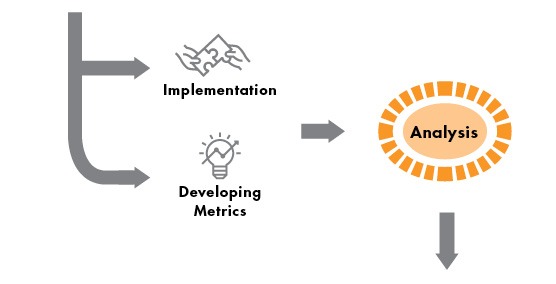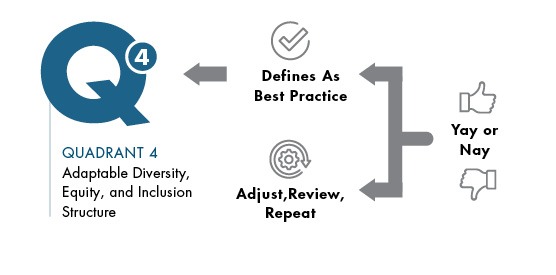The 4 Quadrant Model Framework
Through the collection and analysis of climate data, we gain valuable insight into Grinnell College’s current state. This informs the development of tailored interventions aimed at cultivating a culture of diversity, equity, and inclusion. The data is categorized into three quadrants:
- Quadrant 1: Managing organizational culture
- Quadrant 2: Managing differences
- Quadrant 3: Managing representation.
Following intervention implementation, we track progress through metrics that lead to either iterative adjustments or the establishment of best practices, or Quadrant 4: Adaptable diversity, equity, and inclusion structure.
Our commitment to continuous improvement is reflected in our dedication to refining and iterating upon our strategies. Through the adoption of adaptable structures, we ensure that diversity, equity, and inclusion remain foundational pillars of Grinnell College.









